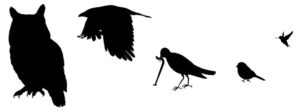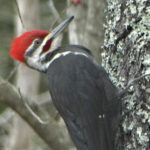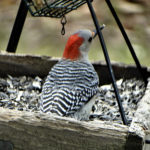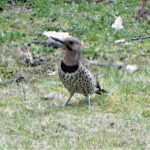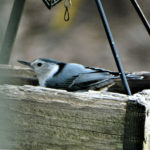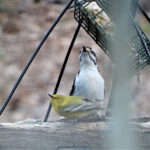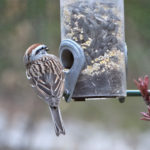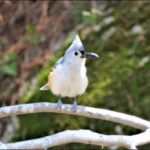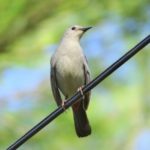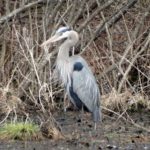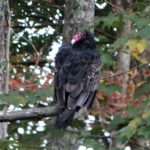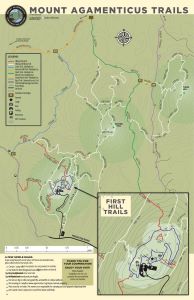Greetings from the Kids’ Corner at Mount Agamenticus! For our sixth season, we’re going digital, and we hope you’ll join us!
It’s bird migration time and Mrs. J is here to help with basic bird identification.
Much of the information shared below comes from the Cornell Lab of Ornithology. This is a wonderful resource for bird enthusiasts, and we encourage families to visit their website and to check out their bird identification app, Merlin. We’ll be sharing links to more resources as our lessons progress!
As our permanent display in the rafters of the Learning Lodge shows, many of us can already identify birds by their size and shape in silhouette form. Sometimes, the bird’s silhouette is all we can see when it’s flying by, or flitting about among the trees and bushes. We’ll begin our Bird ID this week with size and shape!
Notice that these bird silhouettes below are arranged in size from very large, to very, very small. Perhaps you recognize the shape of some of these birds already?
Is the bird you already recognize larger or smaller than the other bird silhouettes? For example, which birds are larger than an American Robin and which are smaller?
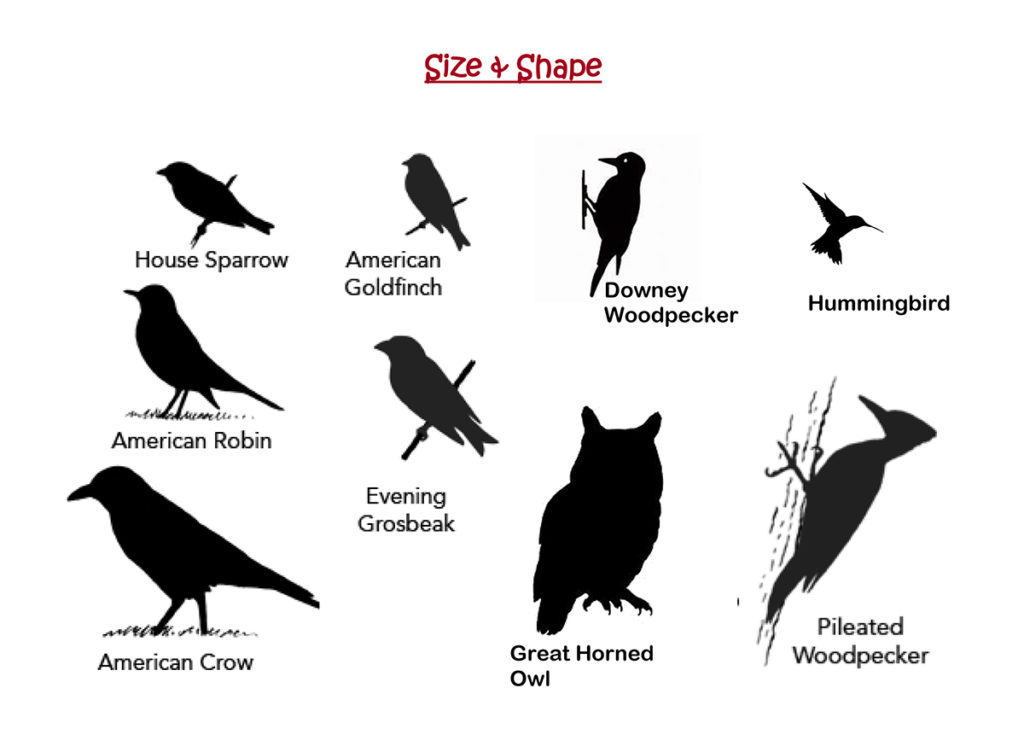
Activity: Familiar Silhouettes. How many of these bird silhouettes look familiar to you?
- Activity Sheet available here.
Activity: Draw Your Bird! What shape is your bird? Use circles and rectangles to help you draw what you see. Look at photos or bird guidebooks. Notice how round and small the chickadee is compared to the robin? This is a great opportunity to start your own nature sketchbook! Try drawing the same bird and notice your progress over time. Try different birds, other animals, or plant life.
- Full-sized Activity Sheet available here.
➤ Click here to share your drawings with us on Facebook! Our Outreach and Education Coordinator tried sketching an Eastern whip-poor-will.
Size and Shape – A Closer Look
Taking an up-close look at feet and beaks can also help us identify and better understand our feathered neighbors! Take a look at the eight photos from Mrs. J’s backyard, below. What can beak shape tell us about what these birds eat? Click the photos to enlarge.
- Northern Flicker
- White-Breasted Nuthatch
- Hairy Woodpecker, Pine Warbler
- Chipping Sparrow
Bottom row, left to right: Northern Flicker, White-Breasted Nuthatch, Hairy Woodpecker & Pine Warbler, Chipping Sparrow
Check out the beak on the Pileated Woodpecker in the first two photos! This species primarily eats carpenter ants, but also termites, cockroaches, spruce budworm, fruits, berries, and nuts.
Now what about feet? Notice the differences between the legs of the woodpeckers in the top row and the songbirds in the second row; woodpeckers’ legs help them cling to trees, rather than stand up straight!
More Beaks!
Photos below taken by Mrs. J unless otherwise noted.
- Tufted Titmouse
- Chipping Sparrow
- Catbird
- Rose-breasted Grosbeak
Tufted Titmouse – seeds, nuts, acorns, spiders, snails, berries
Chipping Sparrow – grasses, seeds, insects (during breeding), small fruits
Catbird – 50% of diet is fruits and berries
Rose-breasted Grosbeak – seeds, insects, fruits

Green Herons tend to stalk prey in ponds rather than trees. They eat mainly small fish but will also eat insects, spiders, crustaceans, snails, amphibians, reptiles, and rodents.
- Pine Warbler
- Wild Turkey
- Great Blue Heron
- Turkey Vulture
Pine Warbler – mostly insects, with fruits and seeds
Wild Turkey – seeds, nuts, large insects, grasses, grains, snails and worms, small reptiles
Great Blue Heron – fish, amphibians, reptiles, small mammals, insects, other birds
Turkey Vulture – meat, carrion
From the Cornell Lab of Ornithology’s All About Birds: The Northern Flicker eats “mainly insects, especially ants and beetles that they gather from the ground. They also eat fruits and seeds, especially in winter. Flickers often go after ants underground (where the nutritious larvae live), hammering at the soil the way other woodpeckers drill into wood. They’ve been seen breaking into cow patties to eat insects living within. Their tongues can dart out 2 inches beyond the end of the bill to snare prey. Other invertebrates eaten include flies, butterflies, moths, and snails. Flickers also eat berries and seeds, especially in winter, including poison oak and ivy, dogwood, sumac, wild cherry and grape, bayberries, hackberries, and elderberries, and sunflower and thistle seeds.”
Activity: Bird Beak Adaptations. Draw a line from the bird to the kind of food you think they eat!
- Full-sized Activity Sheet available here.
Activity: Baby bird Relay Race. 96% of terrestrial birds rear their young on insects! A mama robin was reported to go back and forth from her nest 100 times per day to feed her baby birds. Baby robins need two weeks before they can leave the nest. Imagine that daily routine!
- Full-sized Activity Sheet available here.
Join in on the conversation here on Facebook! Thank you for learning with us!
Last modified: June 17, 2020


